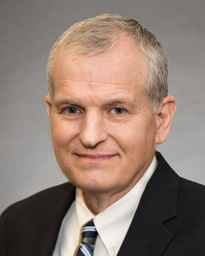Under the auspices of the American Congress of Rehabilitation Medicine, researchers at TIRR Memorial Hermann, McGovern Medical School at UTHealth and other institutions across the country are working to establish consensus recommendations for defining and establishing diagnostic criteria for the post-traumatic confusional state (PTCS). The collaborative project, which includes 17 national experts in PTCS, is led by Mark Sherer, PhD, ABPP, FACRM, senior scientist and Associate Vice President for research at TIRR Memorial Hermann and clinical professor of physical medicine and rehabilitation at McGovern Medical School; Douglas Katz, MD, FACRM, FAAN, Associate Professor of Neurology at Boston University School of Medicine and Medical Director of Brain Injury Programs at Braintree Rehabilitation Hospital in Braintree, Massachusetts; and Yelena Bodien, PhD, a research scientist at Spaulding Rehabilitation Hospital in Charlestown, Massachusetts, and Harvard Medical School, for the American Congress of Rehabilitation Medicine Brain Injury Interdisciplinary Special Interest Group.

All patients with severe TBI and most with moderate injuries have a period in which they do not respond to and are not aware of other people or the states of their own bodies such as pain, hunger or thirst. This state is called coma or the vegetative state. Fortunately, only a small portion of those with brain injury remain in this unresponsive state for an extended period of time. As consciousness improves, they become partially aware of the world around them and their own internal states. Since they are only partially aware, they may act in ways that do not match their situation, exhibiting behavior that seems confused to observers, including family members, therapists and nurses. In addition, they demonstrate impaired attention and memory, decreased or increased level of arousal, sudden changes in behavior and other problems. This clinical state is often called delirium.
“This state may continue for days, weeks or even months,” he says. “Most patients show improvement over time so that they are less confused, less variable in their behavior and better able to cooperate with clinical care. As patients improve, it becomes possible to administer simple cognitive tests to obtain a more accurate assessment of how they’ve been affected by the brain injury.”
As Dr. Sherer and his team developed a definition of PTCS, they identified salient features as disorientation to place and time; a tendency to interpret surroundings in terms of past experience; defects of perception and inability to synthesize perceptual data; grossly impaired memory and judgment; conspicuous disturbance of speech; and other neurobehavioral findings such as passivity or elated mood with pressure of speech similar to that seen in hypomanic states.
Arriving at a mutually acceptable definition of the post-traumatic confusional state has involved several meetings of the workgroup over a number of years, including an extensive evidence review and agreement on diagnostic criteria that will lead to a definition of PTCS that will clarify the nature of early recovery from traumatic brain injury for clinicians and other researchers.
“One of the challenges of defining PTCS is combining the scientific literature with the expert opinions of those who work daily with confused patients,” Dr. Sherer says. “It’s important to combine findings from scientific investigations with the clinical observations of expert clinicians who are working with patients as they move from unconsciousness to confusion and from confusion to a more organized and functional status. It takes time to integrate information from researchers and practitioners to reach a satisfactory consensus. In writing the definition we took into account the opinions of the 17 group members who work in the field, plus evidence from the scientific literature. Then we combined this information in a way we believe captures the key aspects of PTCS. At each step along the way, we had a round of voting. It was an iterative process in which we made progress, got feedback from people in the field, then went back to the table to make changes based on the feedback.”
Many of the key articles on PTCS have come out of the research done by Dr. Sherer and his collaborators, which began in 1997.1-8 For more information about the work of the American Congress of Rehabilitation Medicine Brain Injury Interdisciplinary Special Interest Group, contact Dr. Sherer at mark.sherer@memorialhermann.org.
1Sherer M, Nakase-Thompson R, Yablon SA, Gontkovsky ST. Multidimensional assessment of acute confusion after TBI. Archives of Physical Medicine and Rehabilitation 2005;86:896-904.
2Sherer M, Yablon SA, Nakase-Richardson R, Nick T. Effect of Severity of Posttraumatic Confusion and its Constituent Symptoms on Outcome after Traumatic Brain Injury. Archives of Physical Medicine and Rehabilitation 2008;89:42-47.
3Sherer M, Yablon SA, Nakase-Richardson R. Patterns of recovery of post-traumatic confusional state in neurorehabilitation admissions after TBI. Archives of Physical Medicine and Rehabilitation 2009;90:1749-1754.
4Brown A, Malec J, Mandrekar J, Diehl NN, Dikmen SS, Sherer M, Hart T, Novack T. Predictive utility of weekly post-traumatic amnesia assessments after brain injury: A multicentre analysis. Brain Injury 2010;24:472-478.
5Nakase-Richardson R, Sherer M, Seel R, Hart T, Hanks R, Carlos-Arango J, Yablon SA, Sander A, Barnett SD, Walker W, Hammond F. Utility of post-traumatic amnesia in predicting 1-year productivity following traumatic brain injury: Comparison of the Russell and Mississippi PTA classification intervals. Journal of Neurology, Neurosurgery, and Psychiatry 2011;82:494-499.
6Silva MA, Nakase-Richardson R, Sherer M, Barnett SD, Evans CC, Yablon SA. Posttraumatic Confusion (PTC) predicts patient cooperation during TBI rehabilitation. American Journal of Physical Medicine and Rehabilitation 2012;91:890-893.
7Sherer M, Yablon SA, Nick TG. Psychotic symptoms as manifestations of the Posttraumatic Confusional State: Prevalence, risk factors, and association with outcome. Journal of Head Trauma Rehabilitation 2014;29:E11-E18.
8Sherer M, Sander AM, Maestas KL, Pastorek NJ, Nick TG, Li J. Accuracy of self-reported length of coma and post-traumatic amnesia in persons with medically verified traumatic brain injury. Archives of Physical Medicine and Rehabilitation 2015;96:652-658.